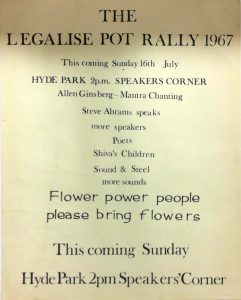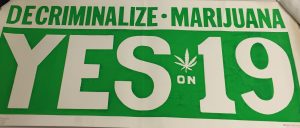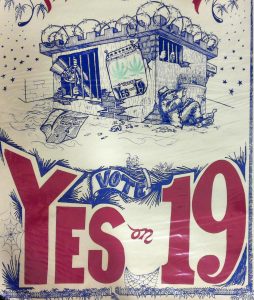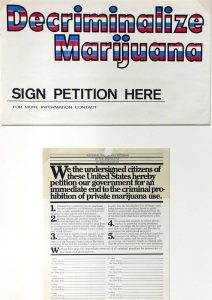This post is part of an ongoing series featuring items from the Julio Mario Santo Domingo Collection.
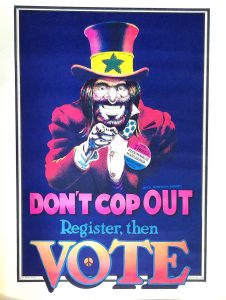 Inspired by Election Tuesday and in light of Massachusetts Ballot Question 4 I thought it might be interesting to look at a few ephemeral examples of the legalization of marijuana I recently uncovered within the collection. For those who do not know Question 4 is a measure that would allow the use, cultivation, possession and distribution of recreational marijuana for individuals at least 21 years old with certain regulations similar to alcohol. If you currently live in Massachusetts and are wondering to yourself “Didn’t we already vote on pot?” you are correct. In addition to the use of medical marijuana the current law on the books in Massachusetts, enacted in January 2009,MGL c.94C, s.32L says that you can possess one ounce or less of marijuana and if you get caught by the cops you will face a $100 fine and they will seize your pot, but no other criminal or civil penalties would apply, in essence decriminalizing marijuana of a certain amount. As I looked to the collection I realized that we have the actual posters and other ephemera which display some of the history of marijuana legalization.
Inspired by Election Tuesday and in light of Massachusetts Ballot Question 4 I thought it might be interesting to look at a few ephemeral examples of the legalization of marijuana I recently uncovered within the collection. For those who do not know Question 4 is a measure that would allow the use, cultivation, possession and distribution of recreational marijuana for individuals at least 21 years old with certain regulations similar to alcohol. If you currently live in Massachusetts and are wondering to yourself “Didn’t we already vote on pot?” you are correct. In addition to the use of medical marijuana the current law on the books in Massachusetts, enacted in January 2009,MGL c.94C, s.32L says that you can possess one ounce or less of marijuana and if you get caught by the cops you will face a $100 fine and they will seize your pot, but no other criminal or civil penalties would apply, in essence decriminalizing marijuana of a certain amount. As I looked to the collection I realized that we have the actual posters and other ephemera which display some of the history of marijuana legalization.
Both of the images above are from a Legalise Pot Rally in 1967 which took place in Hyde Park in London with about 5,000 people. It was a peaceful demonstration with attendees being warned by the cops “not to trample the tulip beds.” You can see film footage of the “flower children” attending. The push to make marijuana legal never succeeded and it remains illegal to this day in England.
In California only a few years later in 1972 Proposition 19 was the first ballot measure in the history of the United States which attempted to legalize marijuana. It would have removed penalties in the State of California for persons 18 years of age or older for using, possessing, growing, processing, or transporting marijuana for personal use. The measure was defeated with 66.5% voting against it. The grassroots organizations that supported it were incredibly passionate citing scientific research that pots wasn’t dangerous and government experts who agreed that enforcement of criminal penalties was costing a fortune in taxpayer dollars.
They also argued that it was ruining the lives of ordinary people who may have just smoked a joint and were now serving years in prison for such a minor offense. You can see this fervor and activism reflected in the posters and petitions in the collection. Of course opponents pointed to how dangerous and unpredictable marijuana was and worried that decriminalization would encourage drug abuse and damage society.
California tried again in 2010 with another Proposition 19 which legalized various marijuana-related activities, allowed local governments to regulate these activities, permitted local governments to impose and collect marijuana-related fees and taxes, and authorized various penalties. Again it failed with 53.5% of Californians voting no. Undaunted there is yet another measure this year, Proposition 64, also known as the Adult Use of Marijuana Act, legalizing the possession, cultivation, and sale of marijuana. Individuals over age 21 would be allowed to possess, cultivate and sell marijuana; the state would regulate commercial activities related to commerce for recreational use; a 15% excise tax and an additional $9.25 per ounce of flower or $2.75 per ounce of leaf would be collected; and possession and cultivation of certain amounts for personal use would be legalized statewide. Will California finally fulfill the hope of all of those people that first tried to decriminalize marijuana in 1972? And will Massachusetts regulate and tax marijuana usage?
Your vote decides.
Check out another special post which explores anti-drug crusaders.
Thanks to Alison Harris, Santo Domingo Project Manager for contributing this post.

